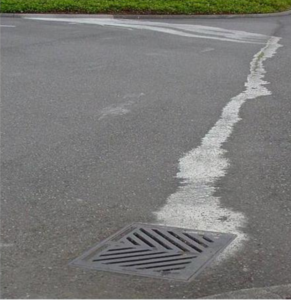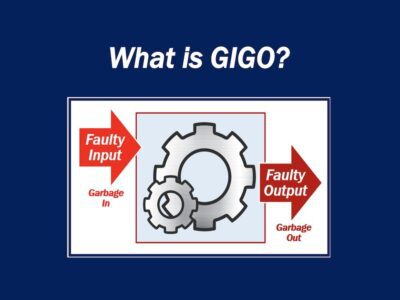The Clean Water Act, Federalism, Big Money and the California Supreme Court
Ill-considered Supreme Court Decision Threatens California’s Administration of Clean Water Act Permit Program
The California Supreme Court recently issued a little-noticed decision on a seemingly arcane state public finance issue that could well wind up having a dramatic, negative effect on California’s continued ability to administer the federal Clean Water Act’s permit program in the Golden State.
The case is Department of Finance v. Commission on State Mandates. In that decision, a bare 4-3 majority of the Supreme Court held that the costs associated with conditions imposed by California’s Regional Quality Control Board on local agencies that operate storm drain systems under a state-administered federal permit must, under the California Constitution, be reimbursed by the state. In doing so, the Supreme Court imposed potentially multi-billion dollar liability on the state while simultaneously misperceiving the nature of the federally-mandated water pollution permit system administered by the State of California since 1972. Even more alarmingly, the Court’s decision threatens the cooperative federalism principles that are inherent in the Clean Water Act’s regulatory program and incentivizes California’s abandonment of that program.
To understand the Court’s decision and its implications, a bit of background is required regarding both the Clean Water Act permit program and the rather Byzantine state finance system that together form the underpinnings of the Department of Finance decision:
The Clean Water Act creates a federal water pollution permit (NPDES) system for the U.S. Environmental Protection Agency to administer. But the Act also allows EPA to delegate that federal permit system to states willing to administer it within their own borders. California was the very first state to seek and obtain this delegated permit authority from EPA in 1972, mere months after Congress enacted the Clean Water Act. One of California’s major incentives in doing so was to combine the NPDES permit program with California’s own, preexisting state water pollution permit system under the state’s Porter-Cologne Act.
Meanwhile, after California voters dramatically limited local government’s ability to increase property taxes by enacting Proposition 13 in 1978, California cities and counties responded with a provision in a related, successful initiative enacted by voters a year later. The latter “Gann initiative” requires the State of California to reimburse local governments for the costs of any state-mandated new program or higher level of service. But that reimbursement requirement is subject to one key exception: the state is not required to reimburse local governments for the costs of any state law imposing on them “a requirement that is mandated by a federal law or regulation.”
Fast forward to 2001. Los Angeles County, on behalf of itself and 84 SoCal cities, applied to the California Regional Water Quality Control Board for an NPDES permit to operate their local storm drainage systems, a.k.a. “municipal separate storm sewer systems” or “MS4.” The Regional Board issued the requested 5-year permit, subject to four conditions intended to “reduce the discharge of pollutants in storm water to the maximum extent practicable” within the local governments’ respective jurisdictions. Critically, the italicized language comes directly from the federal Clean Water Act.
The local governments claim that the conditions, which collectively involve well over $1 billion in compliance costs over the life of the issued permit, filed an administrative claim seeking reimbursement from the state. They argued that the conditions constitute a state-mandated local program. The state countered by asserting that the conditions are part of a federal Clean Water Act mandate, and therefore not subject to reimbursement. After an administrative tribunal concluded that none of the imposed conditions were expressly required by federal law, the State of California sought judicial review. In its Department of Finance ruling, a divided California Supreme Court affirmed.
The majority relied on the fact that federal law does not explicitly require the Regional Board to impose the specific permit conditions that it did. (Indeed, it is plausible to read the Court’s decision as making it impossible for the state to issue any MS4 permits containing conditions without triggering a reimbursable state mandate.) Additionally, said the Court “[t]here was no evidence that the state was compelled to administer its own permitting system rather than allowing the EPA [sic] do so under the CWA.”
Justice Mariano-Florentino Cuellar wrote a vigorous dissent, in which two of his fellow justices joined. Cuellar protested that the majority reached the wrong decision by asking the wrong legal question, while at the same time failing to give appropriate deference to both state and federal water quality regulators.
Cuellar’s dissent notes that the Clean Water Act imposes a general performance standard for federal or state agencies issuing NPDES permits under the Clean Water Act: that the permittee reduce its pollution “to the maximum extent practicable.” He observed that regulators are and should be given broad discretion under the CWA to achieve that result via permit conditions. That’s exactly what the state argued that the Board had done in issuing the permit at issue. Equally important–and as noted by both the majority and dissenters–USEPA had submitted formal comments in the record before the Court indicating that the federal government agreed with the Regional Board that the challenged permit conditions were in fact required to meet the Clean Water Act’s “maximum extent possible” mandate.
Which leads to the second defect in the majority’s decision, as aptly noted by the dissent: the former’s failure to give appropriate deference to both EPA and the Regional Board’s demonstrated expertise in administering “a complex federal statute governing regulation of the environment.”
Justice Cuellar concludes his dissent by noting the profound, adverse policy implications of the Court’s decision:
“[G]iven the nature of the relevant CWA provisions–and particularly the maximum extent practicable standard–it is wrong to assume that the conditions at issue in this case exceed what is necessary to comply with the CWA simply because neither the statute nor its regulations explicitly mention those conditions. The consequence of that assumption, moreover, risks discouraging the state from assuming cooperative federalism responsibilities–and may even encourage the state to withdraw from administering the NPDES.”
The State of California has today formally asked the Supreme Court to reconsider its ruling in the Department of Finance case. Such motions are rarely granted by the Court. But this is the exceptional case warranting that exceptional action by the Court. The majority’s decision misreads California constitutional law, erroneously imposes potentially multibillion dollar liability on the State of California, and perversely incentivizes California to give back to the EPA a federal water pollution permit program that state regulators have administered efficiently and well for the past 44 years.
Justice Cuellar’s dissent and the State of California’s petition for rehearing accurately identify both the legal defects in the Court’s decision and its profound, adverse public policy consequences. Let’s hope Cuellar’s judicial colleagues decide to reconsider the Court’s flawed decision.
Reader Comments
One Reply to “The Clean Water Act, Federalism, Big Money and the California Supreme Court”
Comments are closed.







Yep, they certainly screwed the pooch on this decision.